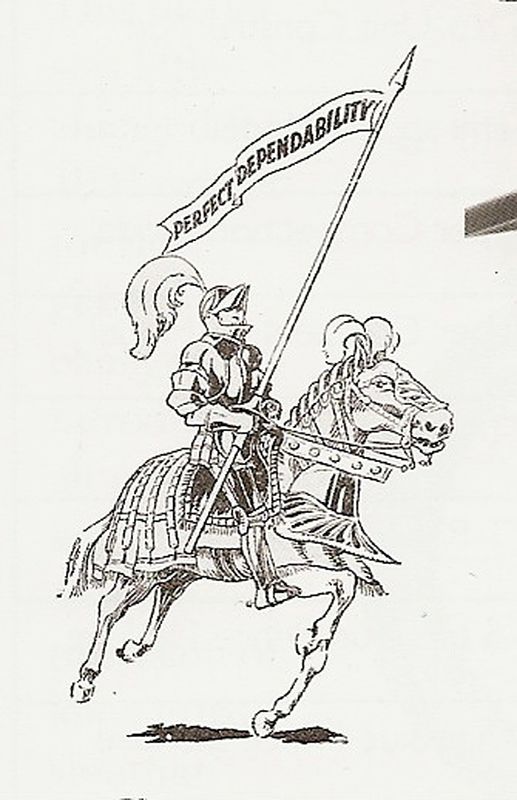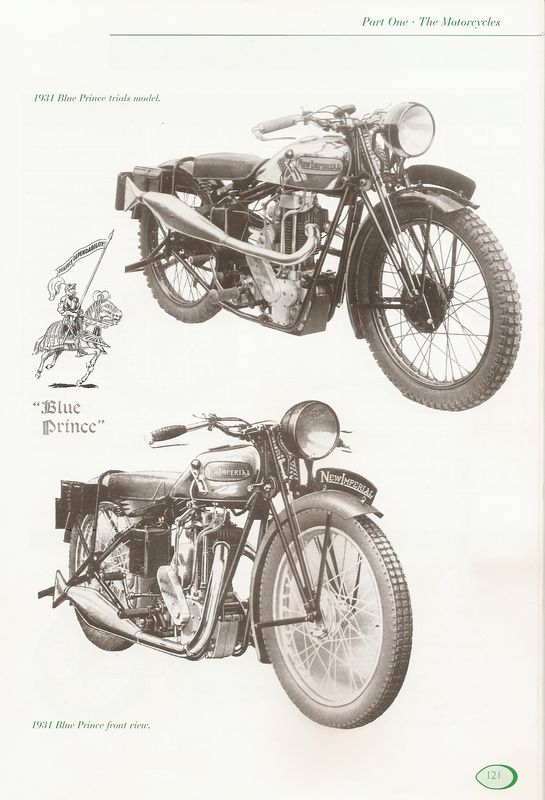New Imperial typ 11B 500 cm3 OHV rok produkcji 1931.
Prezentacja jego jako niespodzianka nastąpiła w trakcie listopadowej Olympia show.
Model 11 B był skierowany dla klienta wymagającego, oczekującego motocykla sportowego i niezawodnego. Zastosowano w nim ekstrawaganckie wzornictwo w postaci chromowanego baku wraz z jasno niebieskimi panelami bocznymi i górnym oraz w tymże kolorze błotnikami. Do tego kremowe koła . Całość wtedy jak i dziś ujmuje swoją urodą.
Motocykl otrzymał świeżo zaprojektowany silnik OHV 500cc który to umożliwiał rozpędzić motocykl do prędkości 80 m.p.h. (128 km / h ) przy zużyciu benzyny 90 m.p.g.( czyli 90 mil na galon – 7 L/ 100 km)
Nagłówek foldera reklamowego brzmiał :
The „Blue Prince” 500 cc
Model 11 5.00 h.p. O.H.V SUPER SPORT (Double Port)
Niech was nie zmyli 5.00 h.p. Wtedy nie zawracano sobie głowy mierzeniem koni na hamowni a określano je z pojemności czyli 500 cc to 5.00 h.p.
Pod hasłem „Blue Prince” zawarto modele B10 (350 OHV) F11 , 11 , 11B (wszystkie o parametrach 500 OHV a różniące się wykończeniem)
Model ten był jak wisienka na torcie ukazująca możliwości producenta.
Wielkość produkcji :
ROK MODEL ILOŚĆ
1931 11 46
11B 214
1932 F11 77
1933 F11 27
1934 F11 28
1935 F11 26
Motocykl ten był bohaterem artykułu w miesięczniku
MOTOCYKLISTA nr 6/2020.
Poniżej prezentuję opinię o tym modelu motocykla autorstwa Chas Lipscombe autora książki "New Imperial Motorcycles"
NEW IMPERIAL BLUE PRINCE MOTORCYCLE
The Wall St Crash and the start of the great depression started in October 1929. Before this Motorcycle sales were high and the motorcycle manufacturers were optimistic about the future. It did not take long before they realised that in a depression people could no longer afford to buy expensive De Luxe, large capacity motorcycles with their high petrol consumption. To keep up sales, many resorted to cheap and nasty two strokes but New Imperial took a different approach. The De Luxe luxury tourers were dropped from the range and replaced by lighter, sportier models, the 350cc and 500cc Blue Prince. One of the machines dropped was the Model 7B which was previously featured in this magazine. These machines took advantage of the new types of paint on the market and were eye-catching in their bright colours.
The Blue Prince models had minimal equipment compared to the de Luxe models, were significantly lighter, cheaper and the performance was increased by 2 b.h.p. It appealed greatly to sporting riders so it was an immediate sales success. A total of 1360 machines were sold during the models life-span from 1931 to 1935.
Early sales received a boost from its first win in October 1930, in the prestigious Scottish 6-days trial when only a few machines had reached the public.
A further boost came from a long distance trial over 25,000 kilometers in the bitterly cold 1930 Dutch winter. 1000 kms were covered every 24 hours for 25 days by a team of three riders on the same bike. Conditions were so bad that icicles were reported as forming on the riders as well as the bikes. The Blue Prince came through the trial successfully with no problems.
Today surviving Blue Prince models seem to turn up all across Europe and this is probably evidence of how popular these machines were on the continent in the 1930’s.







